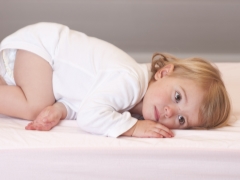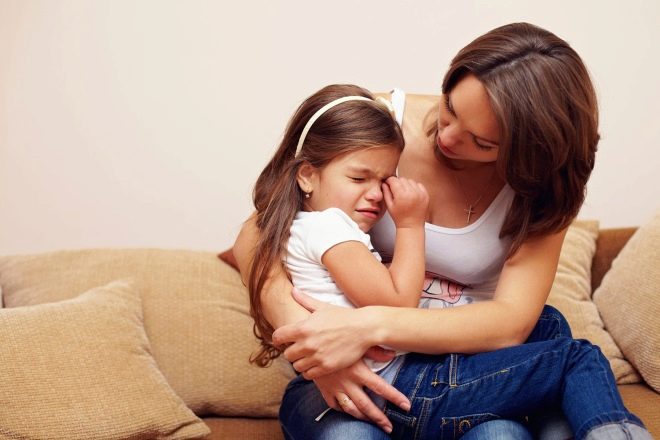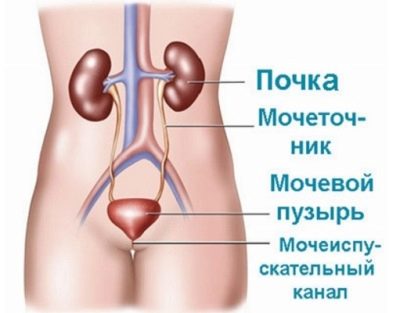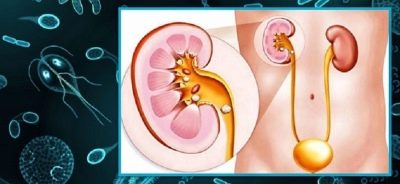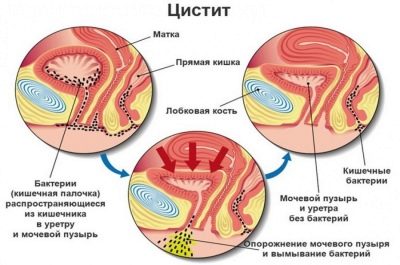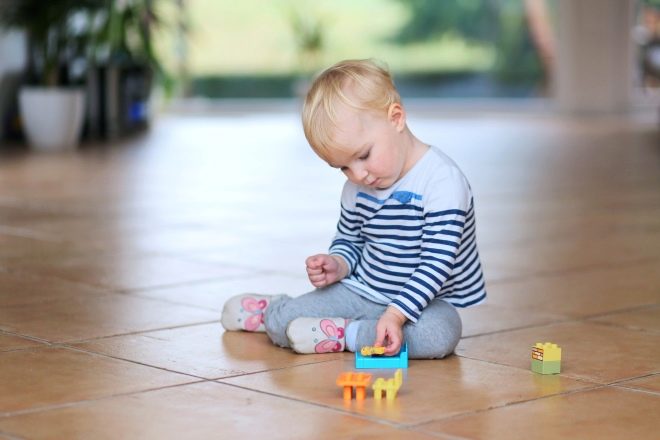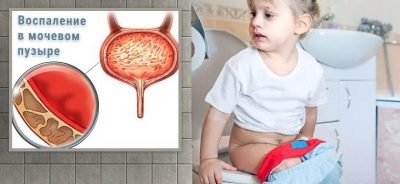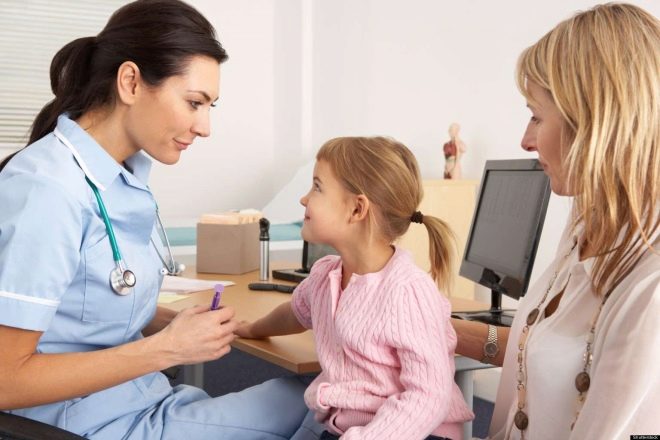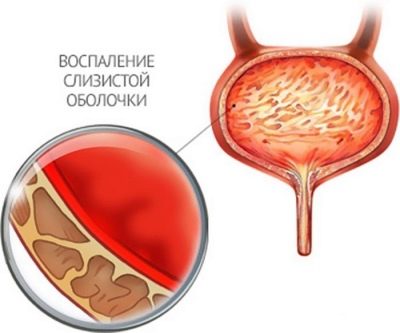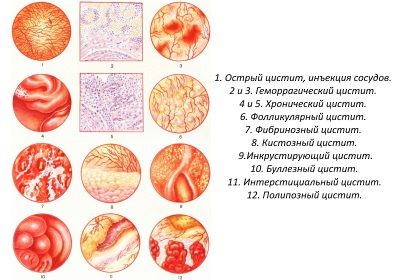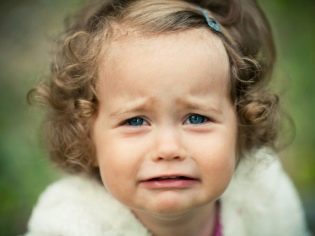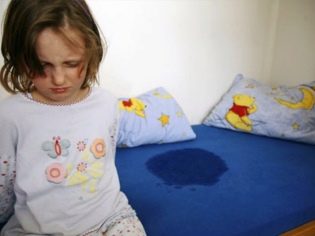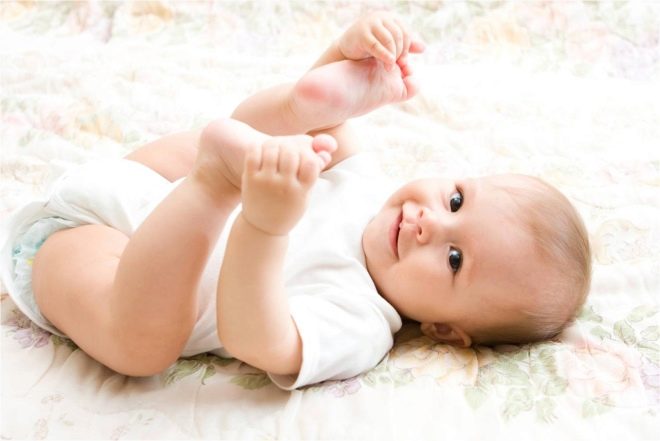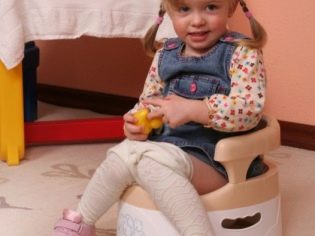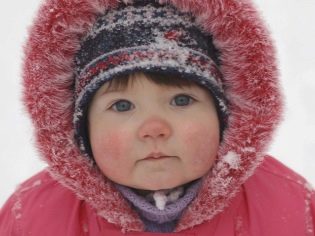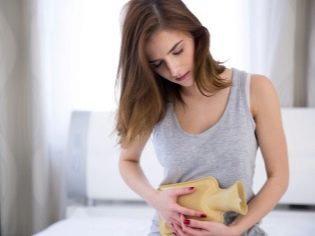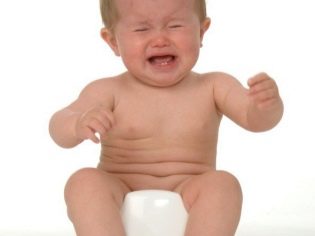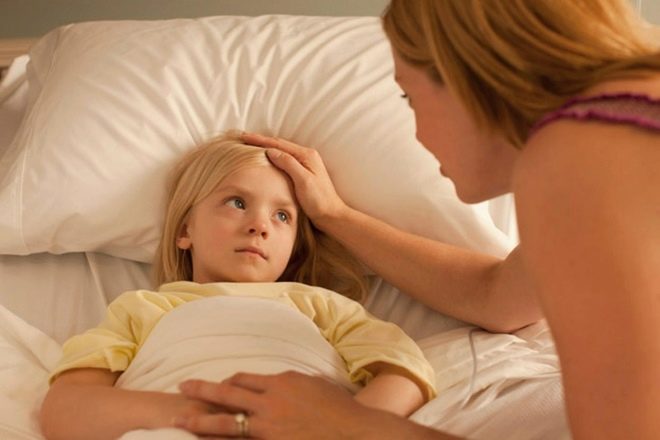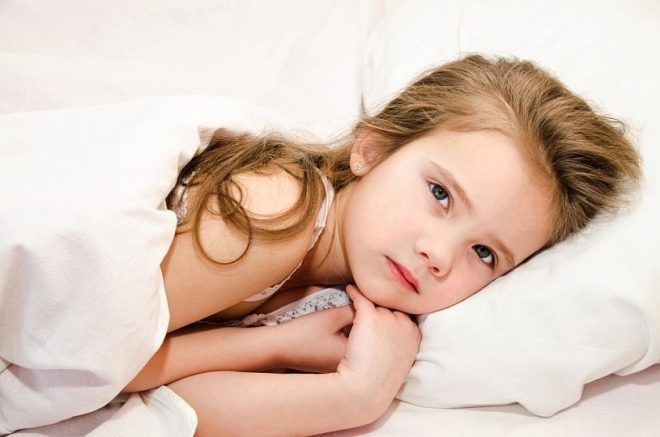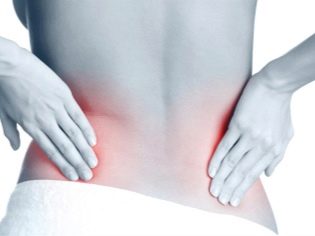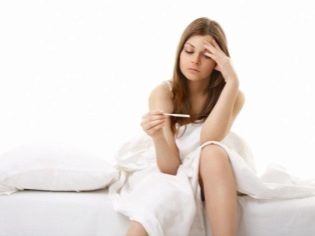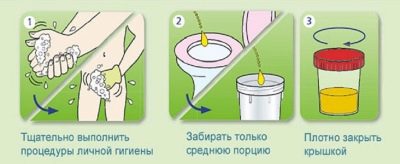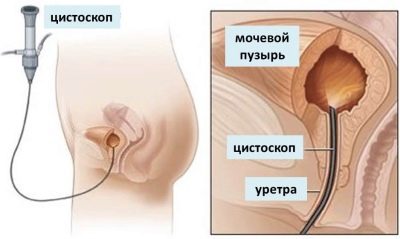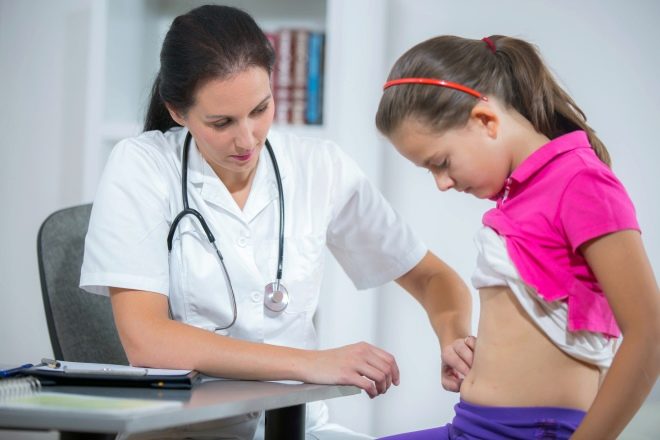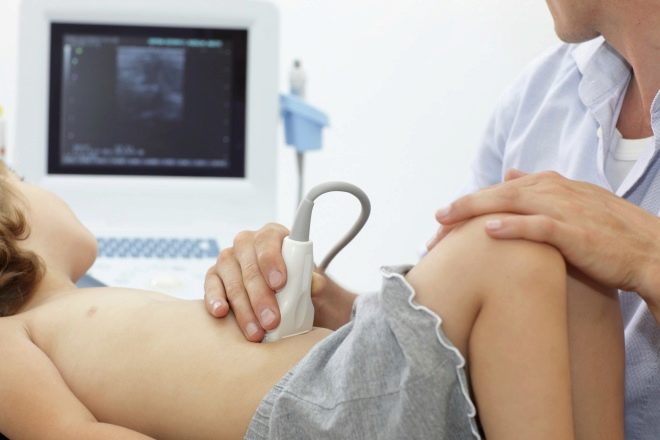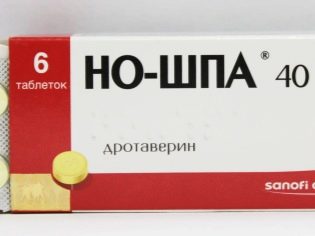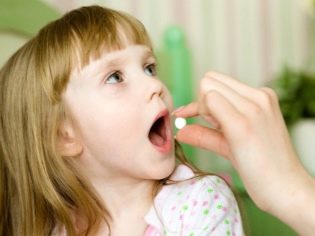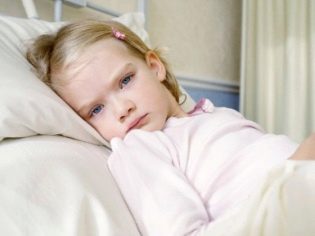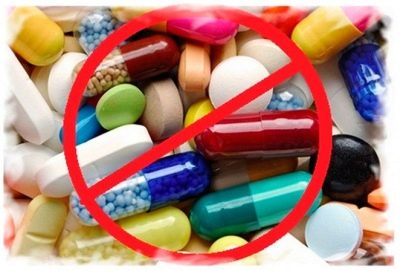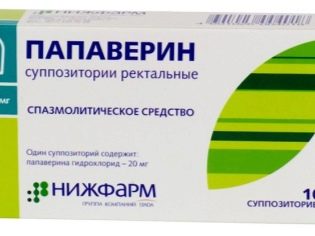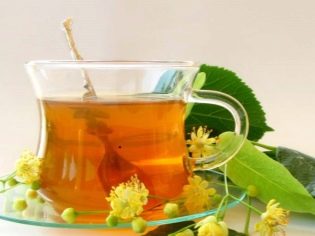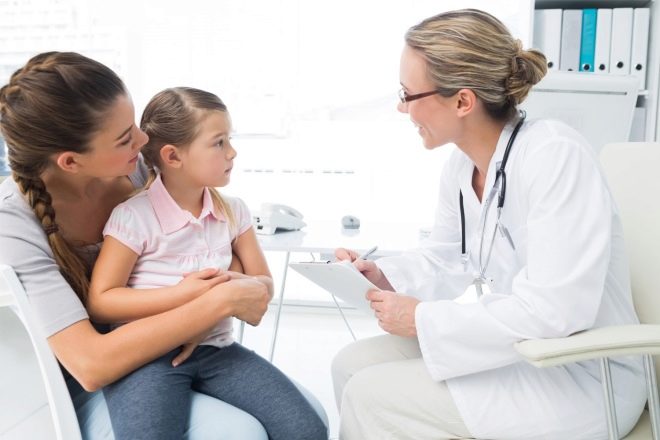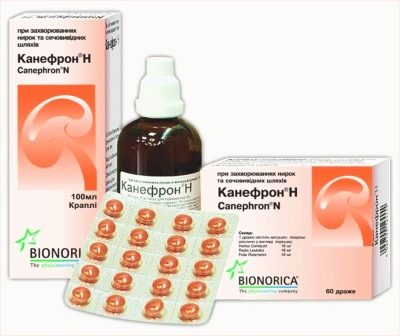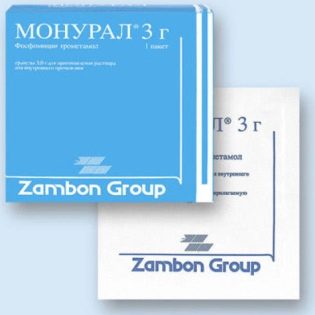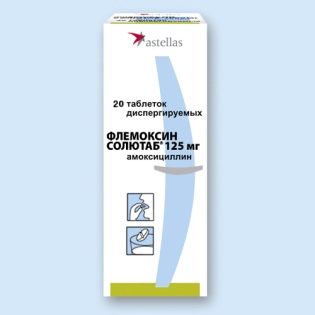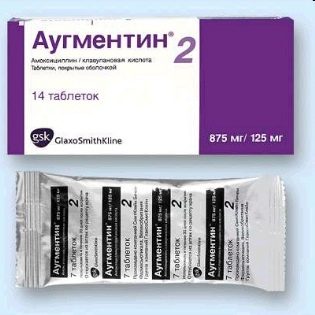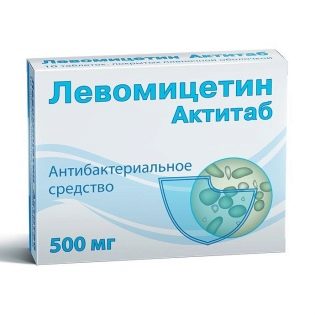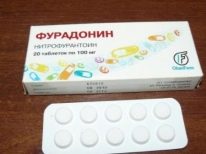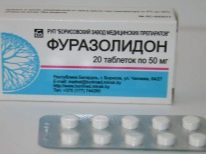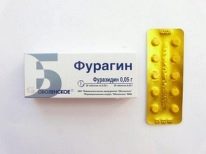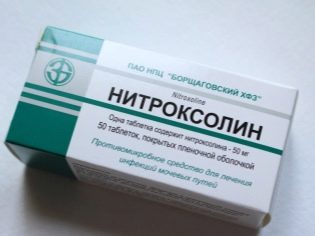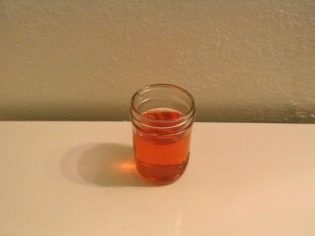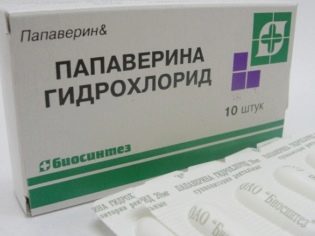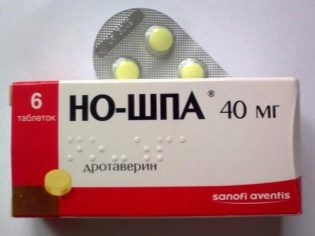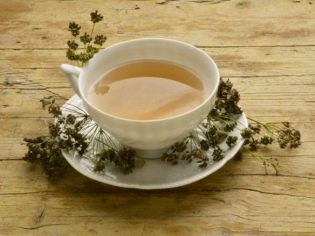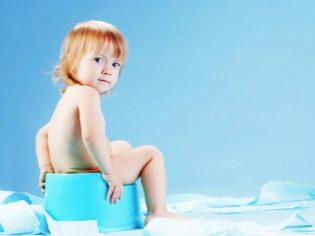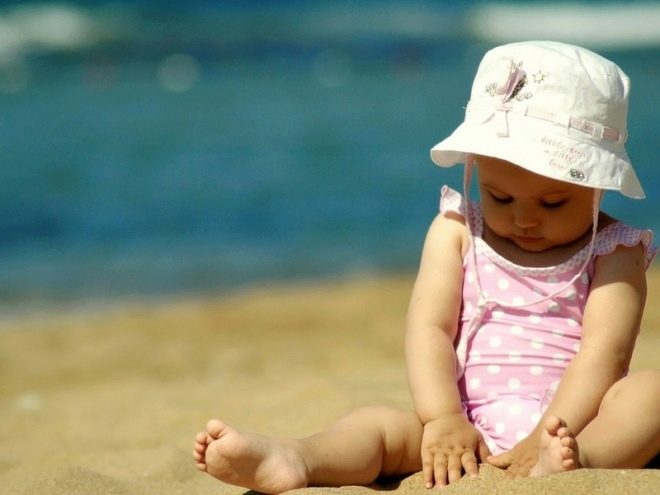Symptoms and treatment of cystitis in girls
To raise a daughter and never face cystitis is almost impossible task. This unpleasant disease in childhood is widespread, and it is girls who most often get sick with it. How to recognize cystitis and treat it, we will tell in this article.
About the disease
Cystitis medical encyclopedia called inflammation of the bladder. In practice, this concept is more extensive, and speaking of cystitis, doctors imply not only inflammatory processes in the bladder, but also urinary infection, which leads to irritation of the mucous membranes of this organ, disruption of its function and significant changes in urinary sediment.
Cystitis in children occurs ten times more often than in adults.
This is due to the peculiarities of children's immunity, and physiological differences in the structure of the urogenital system. Girls are more susceptible to the development of inflammation than boys - for one boy with cystitis, there are about 5-6 girls with the same diagnosis. This is explained by the length and width of the urethra - in boys it is narrow and long, in girls - wide and short.
The pathogens that have entered the canal are much easier to survive and reach the goal - the bladder - in the wide and short canal, through which they manage to pass much faster. In a boy, a much smaller number of microbes will get to the bladder, most will die on the way. The girl - most will be able to get where he wants. However, this is not the only way in which bacteria and fungi can enter the urinary system of a child. Sometimes an infection falls from the kidneys.that are sick sometimes pathogens "come" with blood, if the girl's body has a seat of severe inflammation, and sometimes microbes enter the bladder along the lymphatic flow from the pelvic organs.
It cannot be said that every girl to whom microbes got into the urinary tract will develop cystitis. Disease organisms can exist for a long time without causing manifestations of the disease. Their reproduction and pathological activity can trigger the following factors:
- weakness of the child’s immunity (for example, after an illness);
- deficiency of essential vitamins and trace elements;
- metabolic disease;
- hypothermia of the body (in case of vasoconstriction, the kidneys cannot completely filter urine);
- impaired blood supply (caused by cramped and uncomfortable underwear, pressure clothing);
- violation of hygienic rules and requirements, lack of hygiene, in which bacteria from the anus can penetrate into the urinary tract;
- excessive hygiene, especially with the use of aggressive detergents on the genitals. Such means violate the level of natural acidity, chemical irritation and inflammation develops.
Cystitis can be an independent disease, and can act only as a secondary complication of another disease.
Causes
The most common childhood cause of cystitis is intestinal bacteria. They enter the urinary tract with improper or inadequate hygiene. If the baby is rarely changed underwear, rarely washed away or washed away incorrectly, then the probability of infection is very high.In a newborn girl, in an older baby, and in an adolescent girl, microbial inflammation is very often the result of an inappropriate washing technique. Hygienic procedure can not be carried out in a basin or bath. To wash the girls only running water is used, and hand movements during ablution should be directed strictly from the pubis to the anus, and not vice versa.
The second most common reason - hypothermia Many parents believe that walking barefoot is very dangerous. This is not true. If the baby is stomping barefoot, the vessels on the feet quickly taper off and there is no heat loss. The child gets overcooling at the moment when he is sitting on a cold one, because the vessels of the priests do not know how to narrow, and therefore the body begins to lose heat rapidly. Kidney vessels with a total loss of heat narrowed, and the normal filtration of urine is broken.
There are other reasons why girls develop cystitis:
- hormonal "failures" (cystitis is often accompanied by periods of onset and height of puberty, as well as diseases of the endocrine system);
- violations of urodynamics (if the child “tolerates” for a long time, if the emptying of the bladder is not completely);
- allergic reaction (both local - to detergent, powder, which was washed panties and underwear, and the general - to food or medicines).
Girls of any age (from infants to adolescents) can have cystitis. available chronic illnessesdiabetes and pancreatic dysfunction are especially dangerous from this point of view. The bladder very often reacts with inflammation to taking drugs that suppress the activity of the immune system (such drugs can be prescribed for autoimmune diseases).
Separately, it should be said about the neurological and psychological causes of cystitis.
The girls are impressionable, vulnerable, who hardly endure stress, are afraid of the new, are constrained in communication, can respond to certain life situations with cystitis. In this case, doctors do not find a single real cause by laboratory methods that could cause inflammation.
Kinds
Cystitis can be acute and chronic:
- Acute form. Quite a short period of illness with bright and painful symptoms. It is possible to speak of acute cystitis only for a few days after the onset of inflammation. Very quickly, the disease becomes chronic, and therefore help must be quick and correct.
- Chronic form. The most common type of bladder inflammation is with dull, blurred symptoms. In the latent stage, such a disease is characterized by rare and not too painful exacerbations. In the persistent stage, the symptoms are more vivid, but the bladder function is not impaired. In the interstitial stage, the pain is almost constant, the bladder function is impaired.
According to the type of pathogen, there are several types of cystitis:
- Hemorrhagic cystitis. This disease is caused by viruses. Acute hemorrhagic cystitis usually occurs on the background of adenoviral infection or as a complication after it. This is one of the most painful feelings of ailments of the genitourinary system, when urinating a child may experience bloody discharge in the urine.
- Follicular cystitis. This type of disease is caused by bacteria. This name is a disease given for the characteristic nodules - follicles, which are formed during inflammation on the mucous membrane of the bladder. Follicular cystitis is usually not acute, it develops against the background of chronic inflammation. The girl may have kidney problems and be prone to thrush, but the main reason for such cystitis is considered to be improper hygiene.
Such an illness can be very dangerous for a child if he does not receive timely medical care.
- Bullous cystitis. This type of illness always has an acute course.It develops in the form of swelling of the bladder. The mucous membrane of the body increases in size, impedes the circulation of serum fluid. Most often, such cystitis develops on the background of hypothermia. But other factors, such as bacteria, viruses, hormonal hormone disorders of a girl, can also contribute to the pathological process.
- Granular (granular) cystitis. About a quarter of all girls with urination problems make this diagnosis. This type of disease is associated with the development of small granular rash over the entire surface of the mucous membrane of the bladder. In this process, chlamydia, mycoplasma and ureaplasma are most often “guilty”.
- Allergic cystitis. The factors that can cause a disease in this form are numerous. They are quite individual and depend on the child’s personal perception of certain aggressive substances - antigens. Most often children have allergic cystitis as a result. food allergies or inadequate response to medication. In pediatric practice, cases are described in which cystitis of allergic origin was caused by parasites that live in the intestines, or, more precisely, by the reaction of children's immunity to toxic waste products of helminthic invasions.
- Cervical cystitis. In this form, various pathogens and agents cause inflammation of the sphincter, which is responsible for the retention of urine. There are episodes of incontinence and this is sometimes the only symptom of this kind of disease. Urine leaks can be accompanied by pain, especially in the acute period of the disease.
- Neurogenic bladder. In the people, this disease is called easier - cystitis from the nerves.
In this case, neither bacteria, nor viruses, nor chlamydia is detected in the analyzes, but signs of cystitis are evident.
It is believed that the nervous system plays a role in the disease, and the pathology develops due to failure at one or another stage of impulse transmission. The process of urination is quite complex, if we consider it in terms of nerve impulses and signals. The reason most often considered congenital and acquired neurosis and neuralgia, as well as other neurological problems. Very often, such cystitis is accompanied by urinary incontinence and leakage.
Age features
In infants, cystitis is easily explained by the characteristics of the urinary tract. If the disease began at such an early age, then with a high degree of probability it is associated with congenital defects or abnormalities in the structure of the organs responsible for the formation, accumulation and elimination of urine from the body. If the baby was born completely healthy, then the probability of developing inflammation of the bladder is affected by how much quality diapers she wears and how often they are changed - inadequate care, poor-quality materials that come into contact with the delicate skin of the baby in the genital area, allergic reactions affect the reproduction of bacteria.
At 2-3 years old girl cystitis is most often caused by hypothermia. - Children of this age love to play, squatting or on the bottom. Bacterial infection due to incorrectly performed washing is not excluded. At the age of 4 and 5, children are already adapted to kindergarten, they go to the pot or toilet, but they do not usually know how to wipe the ass carefully or give it proper importance. Therefore, inflammation of the bladder at this age is most often bacterial in nature.
Junior schoolchildren of 6-8 years are very prone to stressful situations, because the start of schooling for them is a serious nervous and mental test. That is why at this age there are not only viral and bacterial forms of the disease, but also neurological. Teenage girls for the most part are more concerned about how they look, than the risks of developing the disease.
In trying to be fashionable and stylish, they wear tight pants, panties, skirts, which disrupts the blood supply in the pelvic organs and also often causes bladder problems.
Also, hormonal changes in the body are characteristic of this age, during which cystitis is not the most pleasant, but not the only “side effect”.
Symptomatology
Different types of cystitis have differences in clinical manifestations, but these differences are more diagnostic in nature, they are noticeable only to specialists. For ordinary people, all types of the disease appear almost equally. The difference can only be in the strength of the severity of the clinical picture - with some forms the signs are stronger, with others - weaker. Acute cystitis is usually accompanied by severe painful sensations, chronic in a state of remission has no symptoms, and in the acute stage, the signs are more “smoothed”.
Symptoms characteristic of the disease are as follows:
- Increasing urge to urinate. A girl begins to walk in small need very often, sometimes in an acute form, the desire to pee can occur every 5-7 minutes. At the same time, often even after going to the toilet, there is a feeling of fullness in the bladder.
- Pain during urination. Pain syndrome manifests itself as an acute pain at the time of urination with a slight painful spasm in the lower abdomen at the end of this process. Sometimes the pain "shoots" after emptying the bladder in the rectal area, it is quite painful and painful for the child.
- Change in urine characteristics. Visually at home, you can see only part of the pathological changes. For example, urine, which normally should be transparent, becomes cloudy with cystitis. The amount of fluid is small. Suspension and sediment are visible even without a microscope. Sometimes in the urine may be observed impurities of blood, pus or blood clots. The remaining changes become apparent during laboratory analysis.
- Lower abdominal pain. In the intervals between urination, the pain may be pulling, unsharp. They are significantly aggravated by the urge to empty the bladder and immediately thereafter.
- Increased temperature. The temperature mostly rises only with acute cystitis. Its values are at subfebrile values (37.0-37.8 degrees). Chronic cystitis is unusual.
- General impairment. A girl with an acute illness or exacerbation of a chronic form becomes sluggish, gets tired more quickly, the skin can be more pale than usual, because with frequent urination the body rapidly loses calcium, phosphorus and iron. Anemia is a frequent companion of cystitis.
In an infant, cystitis is manifested by all the same symptoms, the baby cannot only talk about them, so he will refuse to eat, often (as he urinates) screaming.
Disturbed sleep and the general condition of the child. Often the body temperature rises. The skin appears pale, there may be a slight cyanosis in the area of the nasolabial triangle.
Danger
Cystitis in the people is mistakenly considered a mild and simple disease that can be treated with almost a decoction of chamomile. Any reproductive doctor can tell a lot about the sad consequences of untreated or undertreated cystitis for women's health. Quite often, complicated cystitis leads to dysfunction of the bladder and kidneys. In girls, it is still dangerous because the infection can remain in a “dormant” state, and subsequently become the cause of female infertility, chronic miscarriage.
If you do not treat the disease with all responsibility and seriousness, then the case may end up with total changes in the tissues of the bladder, which may lead to the need for its removal and the formation of its analogue from other tissues of the body. This is a complicated operation.After her, it will be rather difficult to call the life of a girl full-fledged - perhaps chronic incontinence, infertility, life with a mass of lifelong restrictions - on certain types of food and beverages, on physical exertion.
Diagnostics
If symptoms of cystitis are detected, a pediatrician should be visited as soon as possible. Having evaluated the clinical picture, the pediatrician will prescribe a referral for a consultation with a nephrologist or urologist.
This narrow specialist should be sent with the results of analyzes. To confirm the diagnosis is required to pass a urine test.
Urine collected in the morning, after the girl is washed away. The vaginal opening area is covered with a cotton swab to prevent vaginal secretions from entering the urine sample. Liquid dishes should be clean and sterile; it is best to use special urine containers purchased at a pharmacy.
Deliver a jar to the clinic is important within 2-3 hours. After this, certain changes occur in the urine, urinary sediment falls out and this can give false information to the technician who will conduct a macroscopic and microscopic examination of the sample. In the urine will look for not only signs of inflammation, but also samples of the pathogen. If they find bacteria, they will conduct additional research on the sensitivity of individuals to different types of antibiotics.
For the diagnosis of acute cystitis of these tests is enough. The treatment begins. In case of chronic cystitis or ineffective treatment of the acute form of the ailment, diagnostic studies continue only after the acute attack of the disease has passed. In remission, the girl is assigned a cystoscopy procedure.
Cystoscopy is a method in which an endoscope is inserted into the urethra.. The doctor gets the opportunity to see the bladder, assess its condition, size, the presence of tumors, adhesions, swelling. This is usually enough to clarify the type of cystitis.
In some cases, a little girl will be shown a visit to a pediatric gynecologist.
All teenage girls with cystitis will be sent to the same specialist, but without fail. A female doctor will assess the state of the reproductive system, identify the source of the infection, if it lies there and prescribe concomitant treatment to keep the girl's reproductive functions in perfect order.
If the child is registered on the occasion of the discovery of chronic cystitis, several times a year the girl will need to undergo research and pass the following tests:
- general urine analysis;
- urine analysis according to nechyporenko;
- urine bakposev;
- smears on the composition of the vaginal microflora;
- Ultrasound of the genitourinary system;
- cystoscopy.
Medical errors in making this diagnosis are extremely rare, since the disease has not only characteristic clinical manifestations, but also well-defined laboratory indicators - specific numbers and parameters for the presence of components in the urine.
First aid
All the above actions to identify the disease will take a certain time - from days to several days. But the pain in cystitis is quite noticeable and it will be difficult for the girl to endure it. Therefore, at the time of the survey, you can give the child first aid, which will ease his condition:
- A child can be given an antispasmodic drug, for example "No-shpu" in the age dosage. This will help a little to ease the aching pain in the lower abdomen and reduce the intensity of pain when urinating.
- It should be immediately after the discovery of signs of inflammation of the bladder to ensure daughter abundant drinking regime. All drinks should be warm, tea, juice, coffee should be avoided. The volume of liquid that must be given to drink should be sufficient - for a teenager at least 2 liters, for a baby girl - at least 700-800 grams.
- Child must be at restin case of severe pain it should be transferred to bed rest, visits to kindergarten and school should be automatically canceled.
- There is a common misconception that the heat on the stomach and perineum relieves the condition. According to subjective feelings, perhaps this is so. But do not forget that heat exposure only intensifies the inflammatory processand therefore a hot-water bottle on the tummy is a forbidden method for cystitis. The same goes for the hot tub.
- If symptoms of cystitis appear, you should immediately exclude from the diet of the child salty food. Ideally, it is better to give food without salt at all, in extreme cases - to overdo it.
Naturally, these measures do not replace and do not cancel the main treatment. In the framework of first aid, it is not necessary to give the child antibiotics and other medications, since it is unknown which pathogen caused the inflammatory process in the bladder.
Treatment
Acute cystitis involves bed rest. The girl should not be much and actively move, walk. Drinking a lot is important throughout the treatment. The fluid is needed so that with frequent urination the bacteria and other organisms that cause inflammation leave the bladder.
A special diet is a prerequisite for a speedy and complete recovery.
In the food, which give the baby, should not be a large amount of salt, spices. Completely exclude from the diet of sharp, smoked, fried foods. To stimulate urination, the child can brew kidney tea or make bearberry decoction. With severe pain, it is allowed to take warm, sedentary baths, but the water temperature should not be too hot. At the same time, it is possible to give drugs to a girl who are able to relieve muscle tissue tensions - antispasmodics, for example, "Papaverine" or "No-shpu".
The basis of treatment is medicines that can actively resist the causative agents of the disease. Since the exact type of microbe and its ability to resist different antibiotics are established during the diagnostics, the doctor has all the data to prescribe the exact remedy against which the bacteria have nothing to oppose. For fungal inflammation of the bladder, antifungal agents will form the basis of treatment, and for viral infections, antiviral and anti-inflammatory drugs. Allergic cystitis is necessarily treated with antihistamines, and sometimes there is a need for hormone therapy.
The main treatment - should always eliminate the main cause of cystitistherefore, the child may need the help of a neurologist and psychotherapist if the doctor diagnoses a neurogenic bladder. And in case of circulatory disorders of the pelvic organs, the doctor may advise vascular preparations as the main therapy. For all types of cystitis, diuretics, diuretic drugs, are included in the treatment regimen. And with them in order to avoid the loss of important trace elements that are excreted with the kidneys - preparations of calcium, phosphorus, iron.
Sometimes the problem can be solved only by surgery.
This is usually the case for congenital abnormalities in the structure of the urethra or sphincter of the bladder. Thus, the pathological narrowness of the urethra, which hampers the normal flow of urine and causes cystitis, can be corrected by surgical intervention. The urethra is dilated, the outflow of fluid is restored, the residual inflammation is then treated according to the standard scheme described above.
To avoid relapse, parents are recommended to show the baby to the other specialist doctors in order to identify possible foci of inflammation (for example, tonsillitis or adenoids) and take measures to cure them as soon as possible. Any source of infection in the body increases the possibility of recurrence of the disease. and its transition to the chronic stage. Treatment of cystitis is always complex. Not enough diuretics or antibiotics.It is quite difficult to completely cure the disease, but if all the rules and recommendations of the doctor are observed, this is real.
Preparations
In the treatment of cystitis in girls most often used the following drugs.
Diuretics
The main drug is "Kanefron". This is a multi-component herbal preparation that is dispensed in drops and tablets. Children up to 5 years old can only be given drops, older than this age - a tablet form. Babies under one year old are prescribed 10 drops three times a day, girls 1 to 5 years old - 15 drops three times, children older than five - 1 tablet three times a day. Teenagers from 12 years old - 2 tablets three times a day. The tool can be independent in the treatment of chronic cystitis, if the doctor prescribes it a long course.
In the treatment of the acute form of the disease, Canephron is always used as an adjunct drug.
Antibiotics
Among them:
- «Monural». This is a new modern antibiotic that has activity against a wide range of bacteria. This is a granulated dry substance, which is diluted with water in the proportion indicated in the instruction. Children under 5 years old can not take an antibiotic. Children older than five - try to give medicine as soon as possible. It is taken once at a dosage of 2-3 g
- «Flemoxine Solutab». Penicillin antibiotic, which is available in soluble tablets. Even a small amount of water is enough to make the tablets into a suspension suitable for children's use. Baby from 1 to 3 years, the drug is given three times a day, 125 mg. For girls from 3 to 6 years old - three times 250 mg each, for girls from 6 to 12 years old - 500 mg twice a day. The minimum course of treatment is 5 days. Maximum - 2 weeks.
- Augmentin. This is a combined broad-spectrum antibiotic. Available in tablets and powders, of which at home you can easily prepare a suspension.
- «Levomycetin». The dosage of the drug is calculated by the doctor based on the weight and age of the girl.
Nitrofuran preparations
Among them:
- «Furadonin». The tool is not an antibiotic, but it is considered bacteriostatic - it stops the reproduction of bacteria. Available in the form of tablets and suspensions. The drug is approved for use for children from 1 month. Suspension and tablets can be stirred with milk. The doctor determines the dose based on the child's weight (6 mg per 1 kg of weight). The resulting amount is divided into four steps. The course of treatment can be from 5 to 10 days.
- «Furazolidone». This antimicrobial drug is available in tablets and granules for the preparation of suspensions. The drug is considered quite heavy, so girls under 12 years old can not take it. Teenagers with cystitis means prescribed for 3-5 days, 100 mg three or four times a day. The drug significantly reduces appetite and affects the work of the gastrointestinal tract, and may also cause an allergic reaction.
- «Furagin». This is another quite effective drug with antimicrobial action, which cannot be considered an antibiotic, despite its aggressive effect on some bacteria, fungi. Available in tablets. The course of treatment is from 10 to 14 days. The drug can be taken to children, but in a strict age dosage, it is calculated by the doctor, using the formula "5 mg per kilogram of weight." When taking this medication, the girl must be given food rich in protein, as well as plenty of water.
Other antimicrobial agents
The main is "Nitroxoline". This antimicrobial drug is effective in treating not only bacterial cystitis, but also fungal infections of the urinary tract. It is not an antibiotic. This tool can be prescribed not only for treatment, but also during diagnosis, if the child needs to perform cystoscopy to avoid infection after entering the endoscope. For girls up to 5 years old, for the treatment of cystitis, four tablets are prescribed at a dosage of 50 mg per 1 tablet.Girls from 5 to 15 years old can take from 1 to 2 tablets four times a day. The tongue and urine on the background of the reception of this tool are painted in a rich crimson color. You should not be afraid of it. After the end of the course of treatment, the color is normalized.
Antispasmodic
Among them:
- «No-shpa». Known fast-acting remedy that relaxes smooth muscles. Available in the form of tablets and solution. Tableted form can be given to girls from 6 years. Babies who have not reached this age, do not give the drug. Solutions are intended for adults only. Dosage - no more than 80 mg per day. This amount is better divided into two steps.
- "Papaverine". This myotropic antispasmodic also effectively eliminates the pain and tension of smooth muscles, but it can be given to young children. The drug is approved for use in children from six months. Available in the form of tablets, solution and rectal suppositories.
The dosage is calculated by the doctor individually.
ethnoscience
Specialists do not recommend treating children's cystitis at home with folk remedies, since the disease can have very sad consequences due to the absence of antibiotics and antimicrobial agents that act quickly and precisely. But as an auxiliary therapy, official medicine favorably refers to such recipes of alternative medicine, as a decoction of parsley and a decoction of millet as a drink, as well as a decoction of chamomile to add to warm baths.
For the diuretic effect it is very useful to water the girl with a decoction of dill seeds, an infusion made from birch leaves and boiling water. It should be borne in mind that in case of allergic cystitis, herbal remedies are strictly prohibited. Treatment of other forms of the disease can be accompanied by recipes of traditional medicine.
Prevention
There is nothing difficult in preventing the development of this disease:
- From birth, you need to properly flush the girl - only under running water, making hand movements from front to back, and not vice versa.
This will save the girl's genitals and her urethra from the penetration of microbes from the intestines.
- You can not often wash the genitals of the child with soap - this leads to irritation, allergic reactions and inflammation not only of the genitals, but also of the urinary tract.
- Do not allow frequent and prolonged constipation - it violates the blood supply in the pelvic organs.
- Hypothermia should be avoided - the child should not swim for too long in natural waters, sit on cold surfaces.
- Teenage girls should dress warmly, regardless of fashion, too narrow trousers and skirts should be replaced with more spacious things.
- It is necessary to monitor the purity of the genitals of the girl. After playing in the sandbox, if the girl was squatting, after swimming in the river or the sea, you should quickly wash the baby and change him into clean panties.
- We can not allow the child to endure a long time before going to the toilet for a small need. This adversely affects the process of urine decay and the condition of the bladder sphincter.
- All inflammatory diseases, helminthic invasions should be treated on time, not bringing them to the advanced stage.
The doctor will tell about what and how often you need to flush the girls. Komarovsky in the next video.
